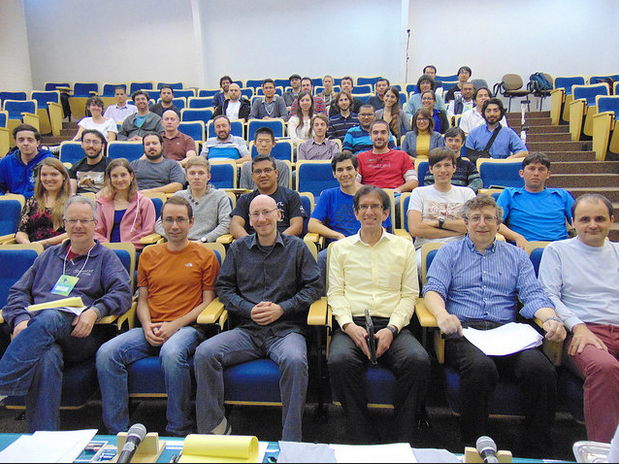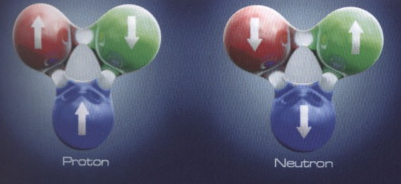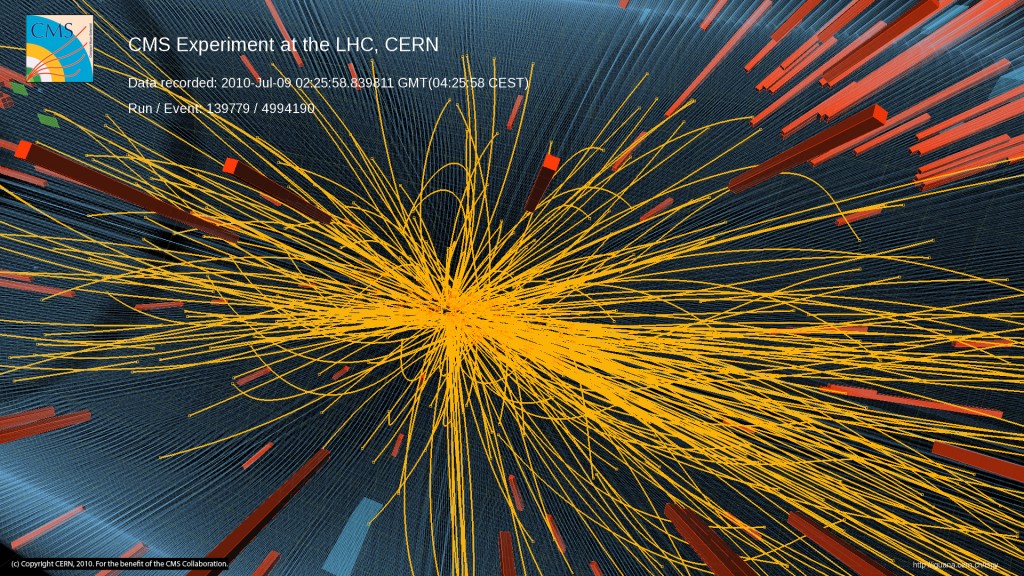ICTP-SAIFR organizes School on QCD and LHC Physics
The Particle Physics area is living a year of expectations with the start of the second run of the Large Hadron Collider (LHC), the largest particle accelerator in the world. In addition to study further the Higgs Boson, one of the main goals of the LHC is to detect new particles, which would mean the existence of a Physics beyond the Standard Model. These were some of the reasons why ICTP-SAIFR held the “School on QCD and LHC Physics“. Between July 22nd and 31nd, the event discussed topics related to the field of Quantum Chromodynamics and Particle Physics. The School was proposed and organized by important names of these fields, such as David Kosower (Saclay), Daniel de Florian (Universidad de Buenos Aires), Fernando Cordero (University of Freiburg) and Rogério Rosenfeld (ICTP-SAIFR).
“One of the merits of the School was to bring together top scientists from around the world to talk about their specialties”, says Gavin Salam, CERN researcher and one of the lecturers of the event.
QCD
Quantum Chromodynamics, or QCD, studies the phenomena related to the Strong Force – responsible for the interactions between quarks and gluons. The area is called QCD due to the fact that these particles have a property, similar to electric charge, that instead of two types (positive and negative) is observed in three types – which were denominated red, green and blue.
“QCD has been around for about 40 years, but there was a huge growth of interest in this area in the last decade”, says Salam. “The LHC and their findings provided great motivation for studies in QCD. My lectures introduced the main ideas related to this area and to the physical principles and processes of the interactions between quarks and gluons”.
Moreover, Salam stressed that studies in QCD are also related to other areas of physics. “The mathematics involved in these researches can be applied to Field Theory, for example. So contributions in one of these areas may have significant impact on the studies of the other”.
LHC
“The LHC works as an extremely powerful microscope,” says Kosower.
By colliding protons, the particle accelerator allows studies on scales thousands of times smaller than the atom. Understanding what happens in these collisions, however, requires complex calculations. Increasing the accuracy of these calculations, which are often based in approximations, is one of the challenges of Kosower’s area. The physicist, recipient of the J. J. Sakurai Prize for Theoretical Particle Physics in 2014, made significant contributions to the area and spoke about Higher-Order Calculations at the School.
“We aim to make predictions about the probabilities of certain events occurring after the collisions and to better understand what happens in this subatomic universe,” he said.
In this second run, one of LHC’s major goals is to study the Higgs Boson in greater detail. “In the first run of LHC experiments, our calculations were limited because of statistics – few Higgs Bosons were produced. Now, with increased power and luminosity, the LHC will be able to produce and detect a much larger amount of Bosons, which will allow more detailed studies of this particle”.
Among other objectives of the LHC is to discover new particles, not predicted by the Standard Model. If this happens, it would mean the existence of a Physics beyond the Standard Model.
“The most interesting and exciting result, in my opinion, would be the discovery of something new, not predicted,” says Kosower. “But for now, we can’t know what will happen. Maybe new particles will be detected, maybe not. With a record energy of 13TeV, we will be looking at a so far unknown territory”.


